COSTA RICA
San Jose

San Jose
San Jose
San Jose has changed drastically over the centuries, from an agricultural city to the quite cosmopolitan and sprawling capital of present-day Costa Rica. San Jose is packed with modern office buildings and shopping centers. There are few small enclaves with well-preserved architecture, especially around the Barrio Amon area. The local markets are full of energy and exciting. The museums have beautiful collections and the nightlife is very attractive. Dancing until the early hours on Calle de la Amargura and Centro Commercial El Pueblo.
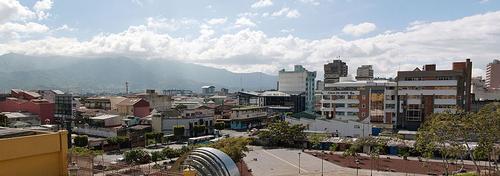 San JosePhoto: Andy Rusch CC 2.0 Generic no changes made
San JosePhoto: Andy Rusch CC 2.0 Generic no changes made
Location
San Jose is located on a plateau in the central valley at an altitude of 1100-1200 meters. San Jose is surrounded by lush green mountains and valleys. San Jose is in the center of the fertile valley, with volcanoes in the north and a rugged mountain range in the south. Three other major cities, Alajuela, Heredia, and Cartago, are also part of the central valley. Nearly two thirds of Costa Rica's population lives in this small and fertile valley.
Weather
The weather of San Jose and Costa Rica is very mild and usually quite warm, with plenty of sunshine and high temperatures all year round. The average is above 30° C per month. March, April and May are the hottest in San Jose, with long days and temperatures above 35° C. Most likely rain in San Jose is between May and early November. This is commonly referred to as the 'wet season' and it can be windy. The months of September and October have the greatest amount of precipitation, averaging about 300 mm per month. Since much of the rain falls in the evening, you can also see sun every day. The advantage of the rain is that the amount of dust on unpaved roads decreases.
History
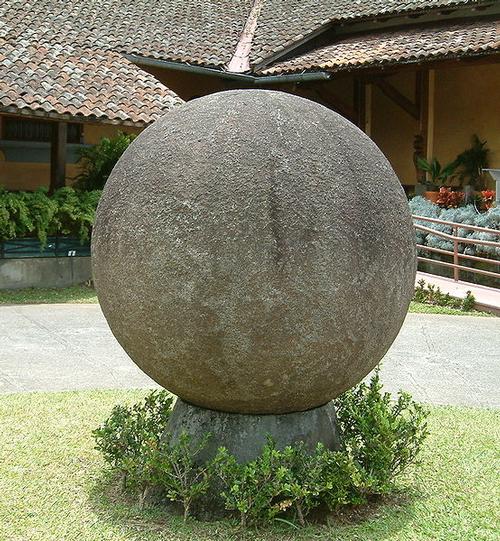 Stone ball from the pre-Columbian periodPhoto: WAvegetarian at English Wijipedia CC 3.0 no changes made
Stone ball from the pre-Columbian periodPhoto: WAvegetarian at English Wijipedia CC 3.0 no changes made
Little is known or survived from the pre-Columbian period of San Jose, only the enigmatic green stone balls still bear witness to this time. The replica of the above photo is in the National Museum.
The city of Cartago was founded by Juan Vásquez de Coronado in 1564. In the early years of the colonization of the central valley of Costa Rica, families spread from the west of the village of Cartago to Aserrí, south of where the city of San Jose is now located. About 170 years later in 1736, the government ordered the inhabitants of the valley of Aserrí to move to Boca del Monte and they founded a church there dedicated to San Jose (Saint Joseph). The parish was known as San Jose de la Boca del Monte en el Valle de Aserrí.
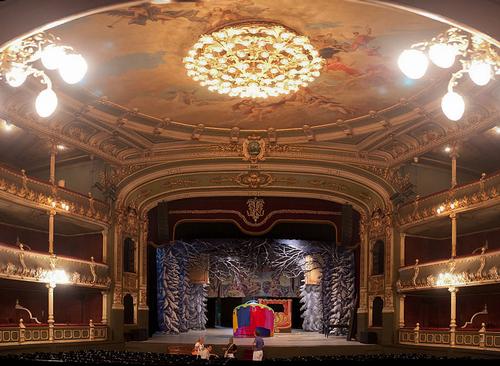 Interior National Theater San Jose Costa RicaPhoto: Kenneth Lu CC 2.0 Generic no changes made
Interior National Theater San Jose Costa RicaPhoto: Kenneth Lu CC 2.0 Generic no changes made
In 1823 the city became the capital of the newly independent country. A year later, San Jose's population had grown to over 15,000. The exploitation of coffee and tobacco allowed the once modest village to become prosperous and culturally developed. San Jose gained a moderate middle class that invested its newfound wealth in social projects. The city was the third in the world to have electric lighting for its population. Well ahead of other cities across Europe and North America. San Jose also installed public phone booths. Towards the end of the century there were squares and beautiful buildings lined with trees, museums, the national theater (Teatro Nacional) and large neoclassical mansions and middle-class residences that gave the city a beautiful appearance. Aided by the coffee revenue and influenced by the exhibitions in Paris and the Crystal Palace, architects build great monuments and schools from imported prefabricated metals.
In the 1940s, San Jose had only 70,000 inhabitants, about one tenth of the population of Costa Rica. After World War II, the city started to grow and annexed neighboring villages such as Guadalupe and Tibas. Sadly, many of the city's most beautiful buildings were destroyed by the demolition hammer in the post-war years, only to be replaced by monstrous examples of modern architecture. This growth continues and the surrounding hills twinkle at night with the lights of the villages that have slowly become part of the city. According to the 2006 census, 365,799 people now live in San Jose.
Sights
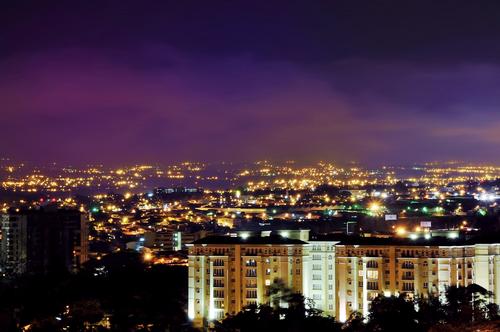 San Jose Costa Rica at nightPhoto: Armando Maynez (CC BY 2.0) no changes made
San Jose Costa Rica at nightPhoto: Armando Maynez (CC BY 2.0) no changes made
San Jose has many tourist attractions related to the country's tropical animals and plants. You will find many butterflies and hummingbird species in the Spyrogyra Butterfly Garden and native animals in the Simon Bolivar Zoological Park. San Jose is a haven for those who want to get up close to the wonders of nature. Other must-see sights in San Jose include the late 19th century National Theater, with its lavish marble foyer and great hall. By visiting the coffee farms on the outskirts of the city you will understand why the Costa Rican coffee from San Jose is some of the best in the world. Don't forget to check out local life in the Central Market. It's buzzing with vibrant attractions and activities at all hours of the day.
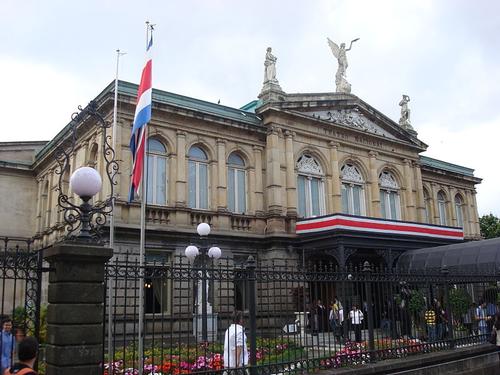 National Theater San Jose Costa RicaPhoto: Tillor87 CC 3.0 Unported no changes made
National Theater San Jose Costa RicaPhoto: Tillor87 CC 3.0 Unported no changes made
The National Theater is an impressive theater built in 1890 and the people of San Jose are very proud of it. It was financed by a tax on coffee imposed on the coffee barons of the time. The classical Renaissance-style theater features artwork by European artists and a striking marble lobby. The theater can accommodate more than 1000 visitors.
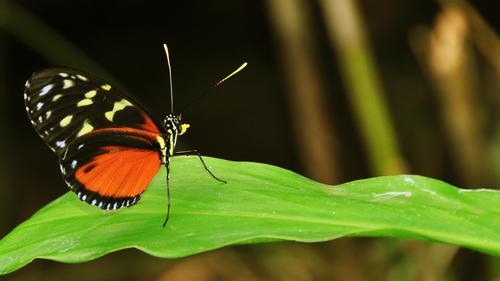 Spirogyra Butterfly GardenPhoto: Armando Maynez (CC BY 2.0) no changes made
Spirogyra Butterfly GardenPhoto: Armando Maynez (CC BY 2.0) no changes made
The Spyrogyra Butterfly Garden is a perfect place to view the amazing butterflies, hummingbirds and plants without leaving the city. This peaceful butterfly garden is suitable for tourists of all ages. Dozens of butterfly species can be seen but also for sale. Visitors to the Spyrogyra Butterfly Garden learn a lot about the important role these beautiful animals play in the environment.
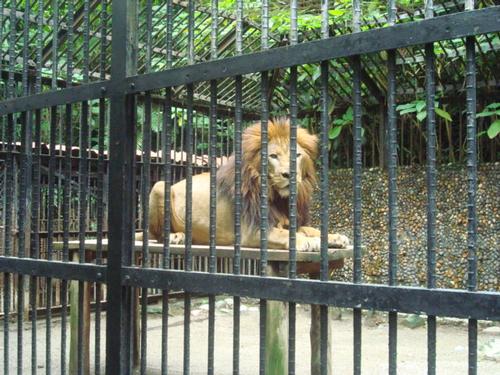 Lion in the zoo in San Jose Costa RicaPhoto: Rodtico21 CC 3.0 Unported no changes made
Lion in the zoo in San Jose Costa RicaPhoto: Rodtico21 CC 3.0 Unported no changes made
The Simon Bolivar Zoological Park is a compact zoo suitable for all the family and gives visitors the chance to see some of Costa Rica's more special animals and plants. There are not only native animals, but also African and Asian species. Visitors to the Simon Bolivar Zoological Park can see jaguars, tapirs, monkeys, exotic birds, reptiles, and much more.
The National Center for Art and Culture offers a showcase of artwork from both Central American and Costa Rican artists and should not be overlooked by the art enthusiasts. The National Center for Art and Culture also frequently hosts international temporary exhibitions.
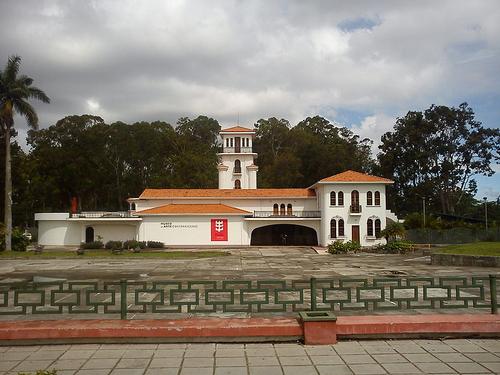 Museo de Arte Costarricense in San José, Costa RicaPhoto: Rodtico21 CC 2.0 Generic no change made
Museo de Arte Costarricense in San José, Costa RicaPhoto: Rodtico21 CC 2.0 Generic no change made
Visitors to the Museo de Arte Costarricense will discover a large and impressive national collection of about 3,000 individual works of art, including paintings, photographs, drawings, sculptures and carvings. Events and concerts are regularly staged at El Salon Dorado. Check the calendar to see if anything of interest takes place here during your vacation in Costa Rica.
Tips
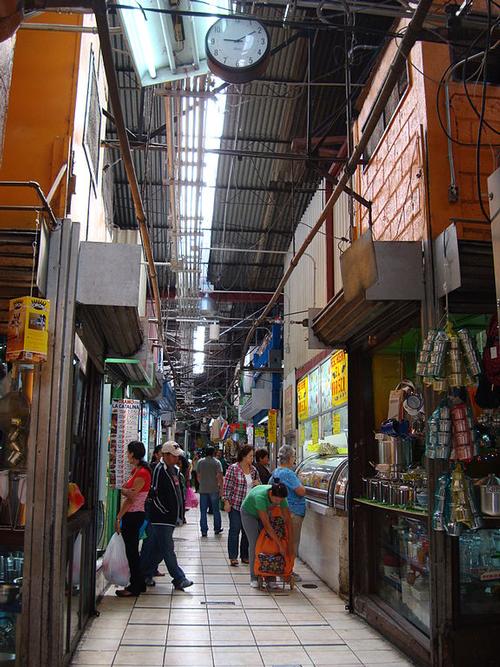 Central Market San Jose Costa RicaPhoto: Eric T Gunther CC 3.0 Unported no changes made
Central Market San Jose Costa RicaPhoto: Eric T Gunther CC 3.0 Unported no changes made
The Central Market is the best place in town to buy authentic Costa Rican food, locally made goods, and artisan products. The central market commonly referred to as the Mercado Central buzzes with activity during opening hours and is a great place to get a glimpse of local life.
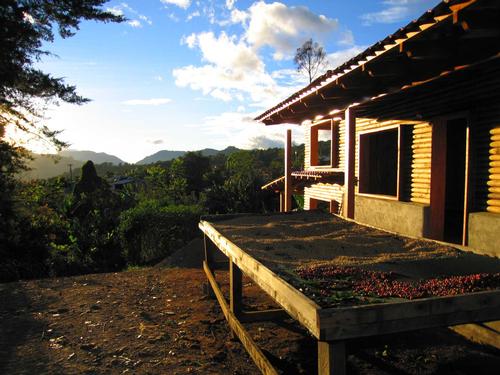 Coffee Farm San Jose Costa RicaPhoto: Public Domain
Coffee Farm San Jose Costa RicaPhoto: Public Domain
Costa Rica is known for producing some of the world's best coffees. Close to the capital, San Jose, there are a number of coffee farms that can be visited by curious coffee lovers. Visitors can purchase coffee directly from the producer at a discount or simply have a look to see how the beans are harvested and processed into coffee. The smell of the freshly ground coffee alone is worth it.
Useful links San Jose
BBC Country ProfilesWorld Fact Book Explore all Countries
How to call
Last updated November 2025
Copyright: Team - The World of Info